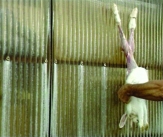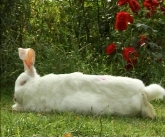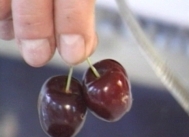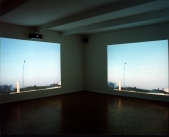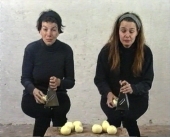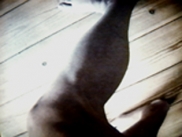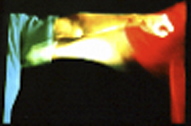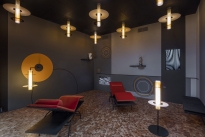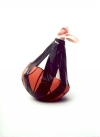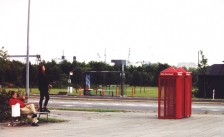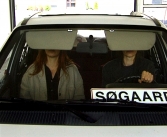- SELECTED WORKS 2014 -
-
- PARTICLES
- BLOWERS / BLÆSER VED HAVET
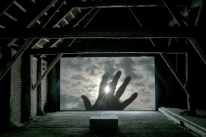
- LUNCH / FROKOSTEN
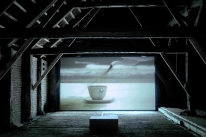
- LIGHT OBJECTS / LAMPS
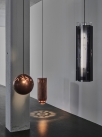
- MODERN ESCAPE
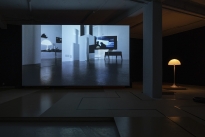
- OUTSIDE IS PRESENT
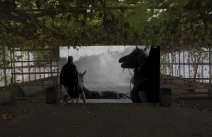
- KIND OF NOISY SILENCE
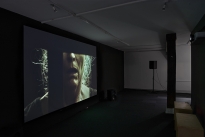
- AT THE FENCE
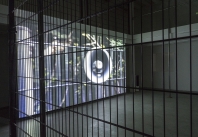
- CAMP KITCHEN
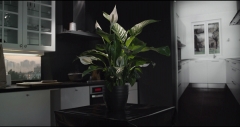
- CIRCLE IN ROTATION

- STAGGERED SHAPES

- DISPLACED ELEMENTS
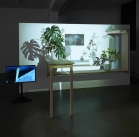
- GRAPHIC PRINTS

- RANDOM COMPOSITION

- BUSY CIRCLE

- DEFENSE AGAINS THE UNPREDICTABLE

- DRIFTING
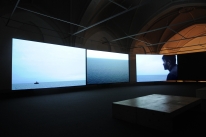
- REALTIME
- SELECTED WORKS 2002 - 2014
-
- POSITION OF THE SPECTATOR III / ADONIS STAIRCASE
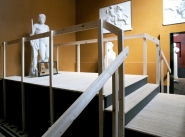
- THE MISSING DARKNESS/ 2011
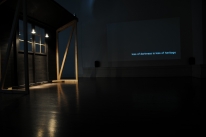
- AWARENESS OF A TEMPERATURE/ 2010
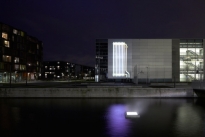
- GETTING IN SYNC WITH NATURE/ 2009
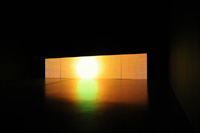
- SNOWMEN AND LADIES/ 2010

- VIDEOS, SOUP, BLANKETS AND PIXIE CAPS/ 2010
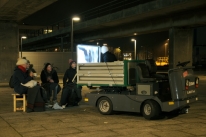
- THE HEATER/ 2010
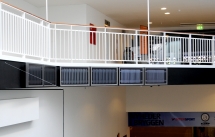
- POSITION OF THE SPECTATOR/ 2008
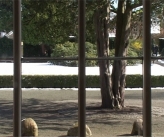
- KEEPING IT SIMPLE/ 2008
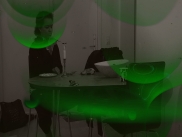
- CAMARADERIES/ 2007
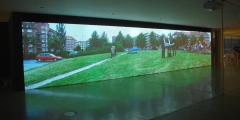
- A MATTER OF STRATEGY / 2007
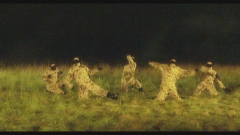
- OFF/ 2006
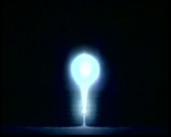
- CONSTRUCTION OF DELAY/ 2005
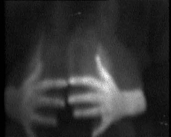
- REPLAY/ 2004
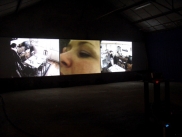
- BLIND WALK/ 2004

- INSTALLATIONS IN URBAN SPACES/ 2004-2009
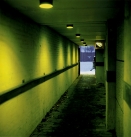
- TERRITORIAL STATEMENTS/ 2002

- I AM SO FUCKING HAPPY/ 2002- ONGOING
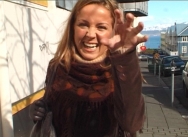
- POSITION OF THE SPECTATOR III / ADONIS STAIRCASE
- SELECTED WORKS 1994 - 2002
- PUBLIC DECORATIONS
- PHOTOS AND PRINT
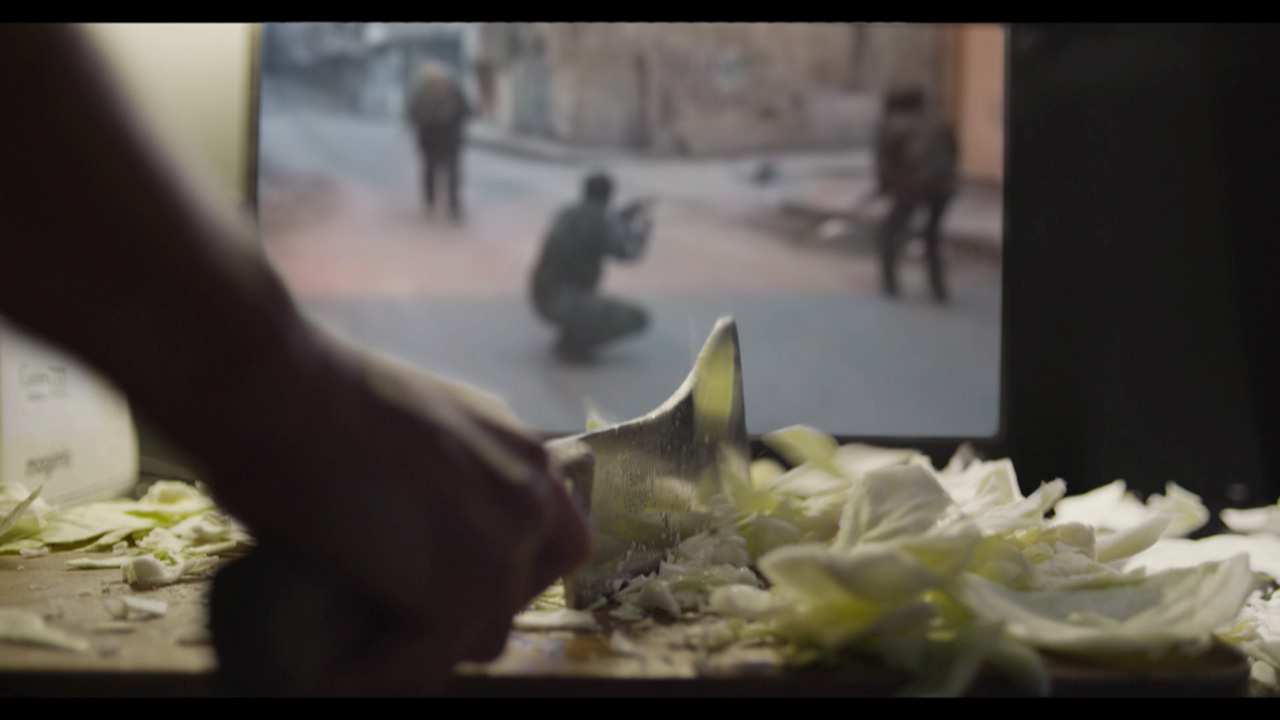
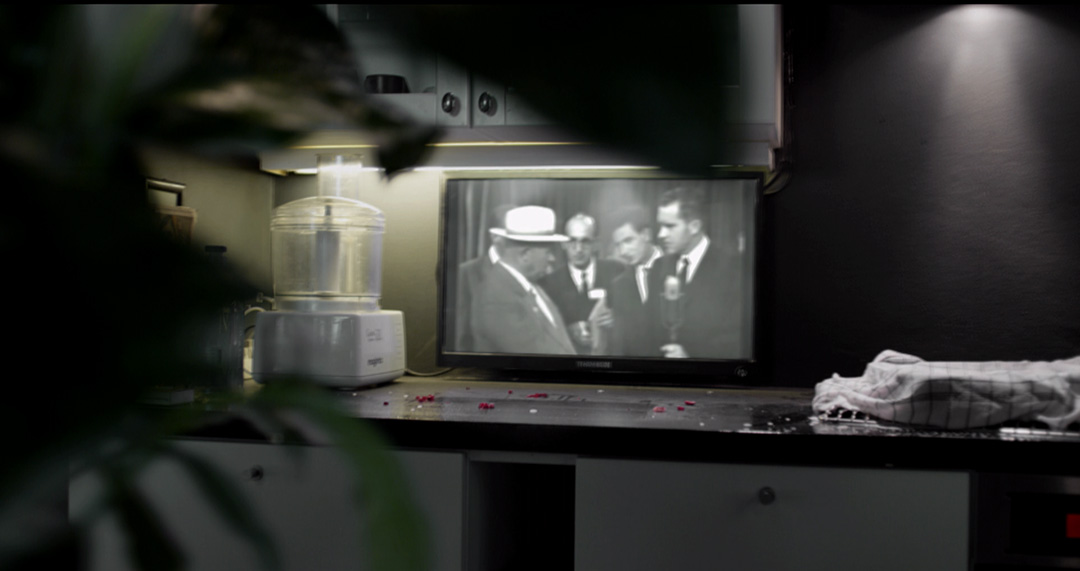
Camp Kitchen
Single screen video installation - projected with peace lilies in the room
Duration: 21 min
Format : HD 1080x1920 – 50 frames/sec-
Shuting format: RED camera 4K
Sound. No dialogue. 2014.
Camp Kitchen:
Camp Kitchen has a kitchen and a staged Western lifestyle as its backdrop: a place to barricade oneself in; protecting against and repressing the world´s problems, while simultaneously maintaining a belief in control.
We stand as spectators in a kitchen scene midway between war and cuisine, where the sound from radio and TV fills the space. In a reaction to the world we are a part of, abrupt and unexpected kitchen scenes pop up.
A longer text and credits, please scroll down.
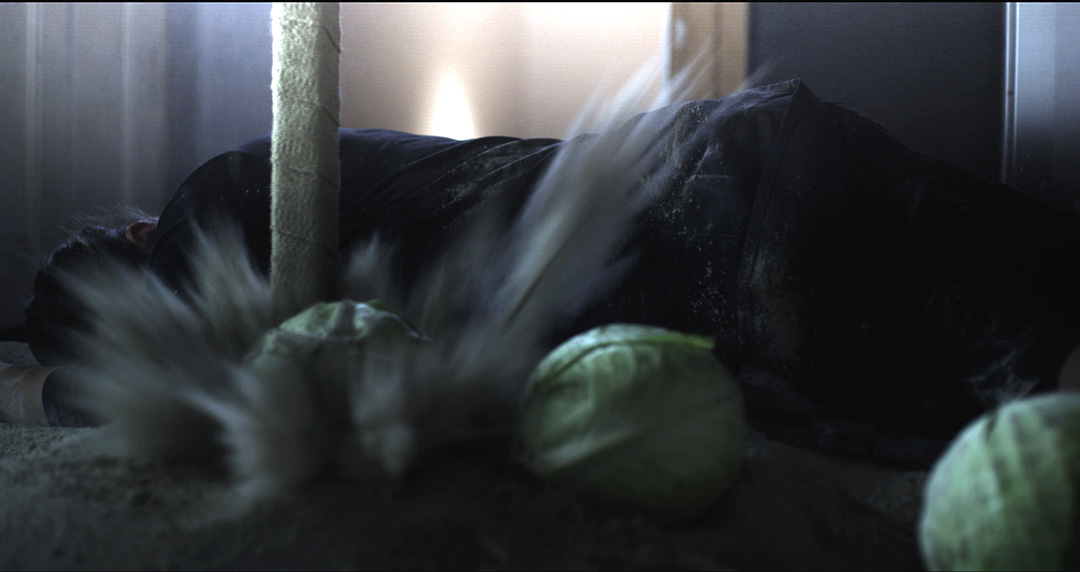

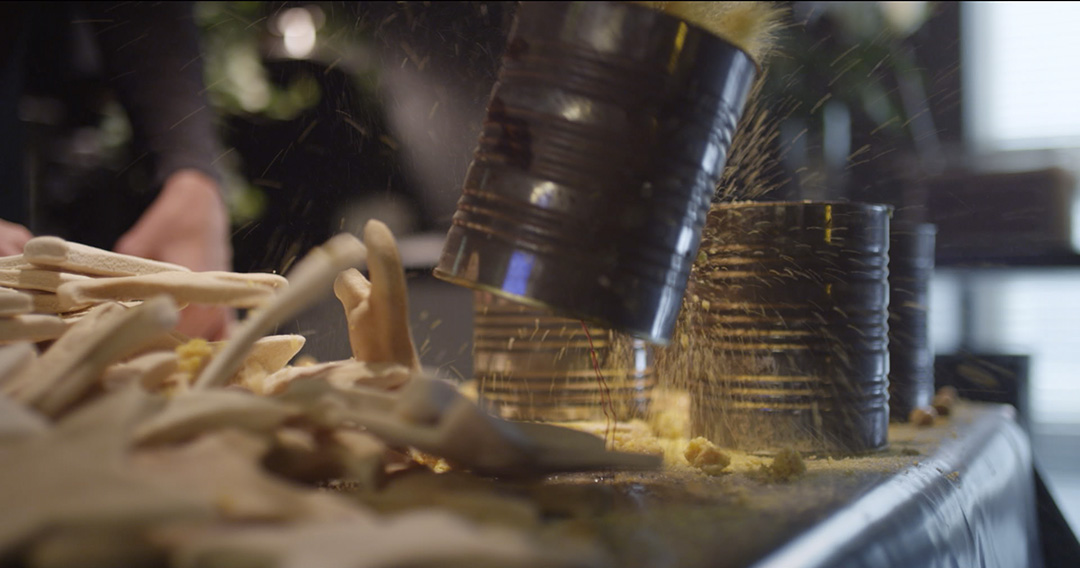
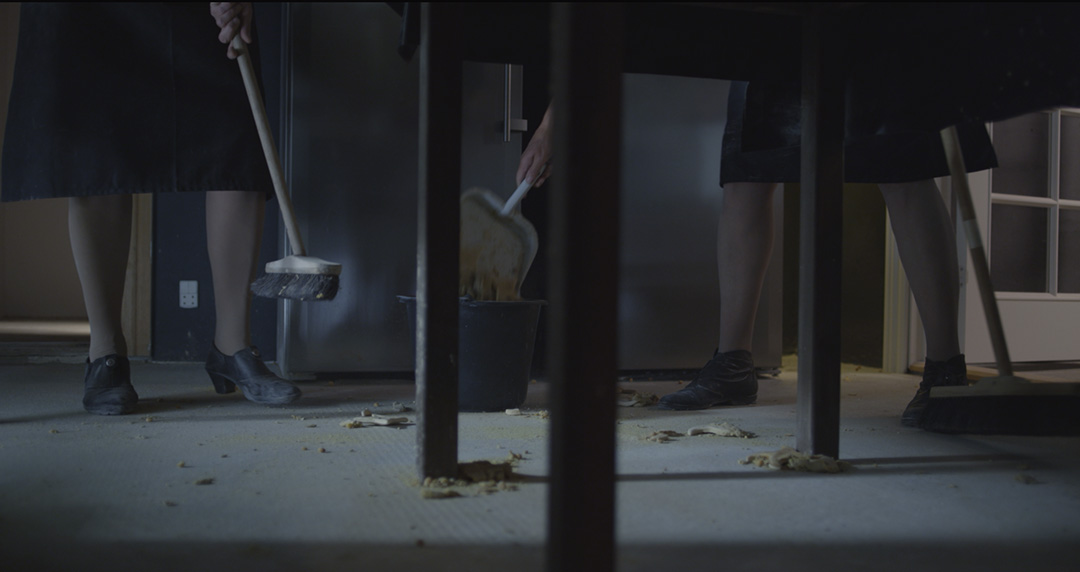
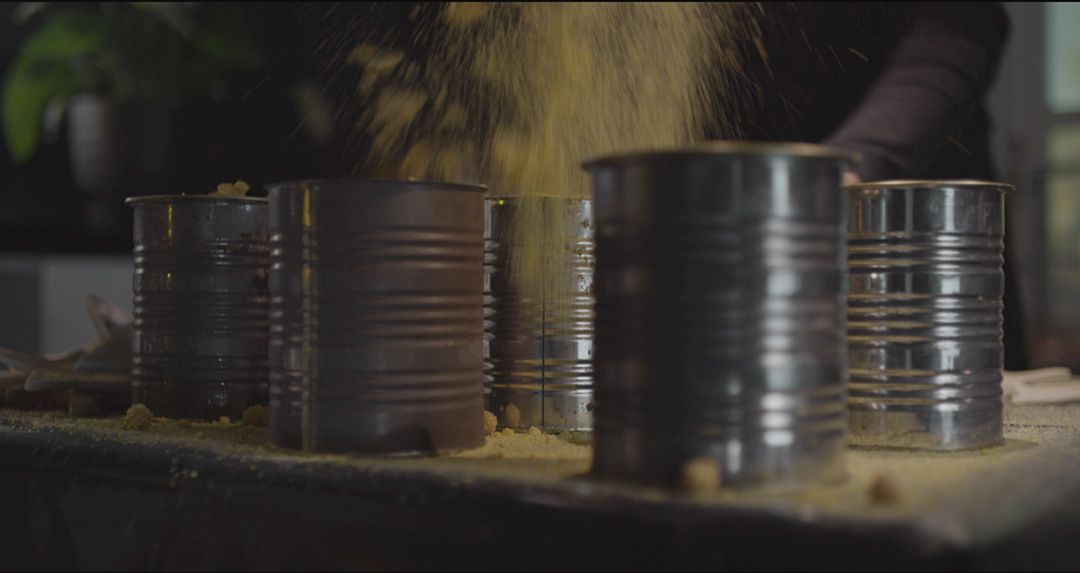
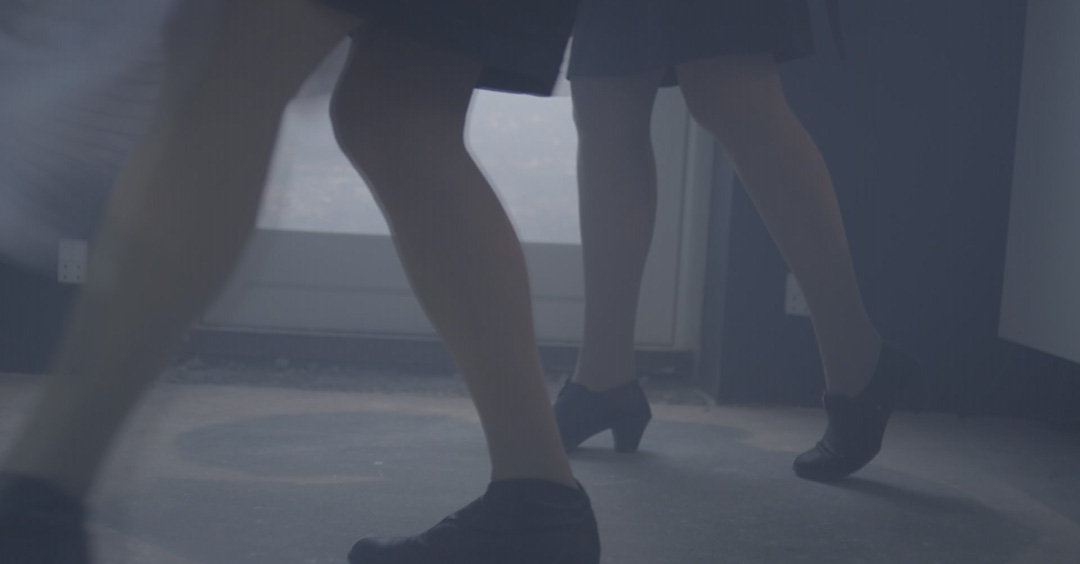
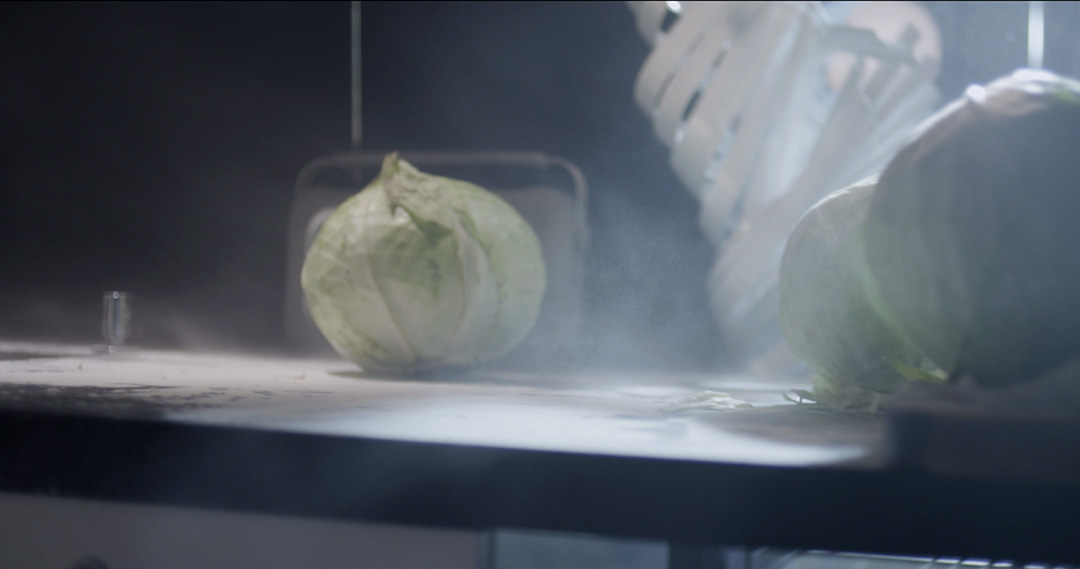
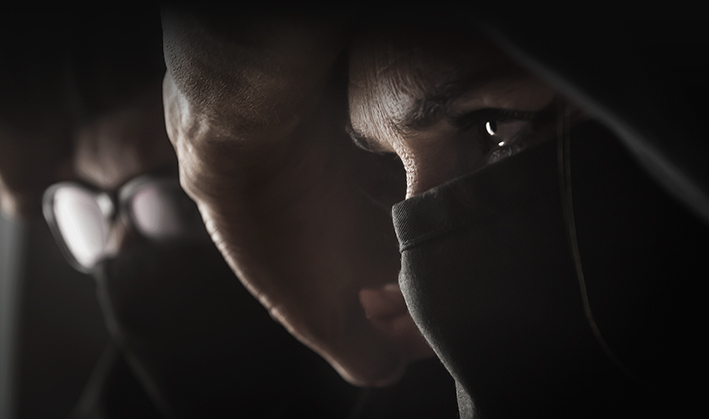
Camp Kitchen
– altermodernistic activistic
War, Cuisine and Ninja Throwing Cookies
Karin Petersen
At first glance we find ourselves in an American kitchen from
the 1960s. The pop singer Brenda Lee surrounds us, filling the
room with her husky and languorous voice, and inviting us in
with the massive hit You Can Depend on Me from 1962. A delightfully
nostalgic and recognisable meeting with an anachronistic
kitchen, similar to the ones we know from countless
American films. When we hear singing voices, we immediately
assign them in time, body, age, race, ethnicity, and what is more,
class,1 which we convey to the narrative layer in the image: the
apron-clad housewife, probably a wasp (white, Anglo-Saxon
protestant) and middle class, in place in her modern, comfortable
kitchen. A Peace lily is on the table, and everything smells of
peace and no danger. But not for long. We are soon torn away
from our American dream, as Brenda Lee moves aside for the
news from radio and TV, which is definitely neither anachronistic
nor peaceful. It is current news from the world’s many flash
points. On the television, a helicopter is brought to earth; maybe
the Black Hawk which the Taliban shot down in 2013. Now
the kitchen might sooner function as a common camp kitchen; a
camping kitchen which the American prepper2 would be able to
seek refuge in. Apparently there is not only one housewife from
a stereotypical nuclear family present but two women, who are
in the midst of cooking. On the menu is cabbage, Denmark’s
oldest vegetable, so maybe in reality we are merely here at
home.
The cabbage is chopped with an excessively large butcher’s
knife, and the sound from the knife changes to almost hyperrealistic
amplified rifle shots. What we thought was a part of the
interior reveals itself to be a roller blind with printed kitchen
motif, and when it is rolled up there is an inferno of burning
fields just outside the kitchen door. The roller blind functions as
an effective screen against reality, because just as soon as it is
rolled up, the surrounding world penetrates the kitchen with
apocalyptic force and we see that the kitchen is located near
a battle zone, similar to Camp Bastion. The helicopter is no
longer merely something one sees on TV or is able to ignore; it
hovers right over our heads causing flour to swirl up from the
table. A desert storm comes blowing in and literally sweeps everything
from the shelves, leaving the kitchen in chaos. Luckily,
with a quick heave on the blind, one can re-establish tranquillity
and order, while Brenda Lee returns soothingly, and the women
quietly and calmly tidy up.
We experience five episodes in this way, following the same pattern:
when the roller blind goes up, all hell breaks loose. The
buns in the oven catch fire, the kitchen machinery goes amok,
dishwater froths up, cans of produce explode, and order is restored
after each episode. But a development happens nonetheless.
Where the women in the first episode are passive and
almost anonymous, they become more and more lucid, outspoken
and active as the episodes progress.
In episode two, where there is most definitely smoke in the
kitchen, we see them for the first time close up, and we now see
that it is the artists themselves who have chosen to act. The
black aprons are held up protectively in front of brow and
mouth, and it is difficult to determine whether they are actual
burkas or, indeed, whether we are perhaps amongst insurgents
on television in Gaza or Egypt.
In episode three we get even closer, also in a figuratively empathic
sense. We see that one woman has a picture of a young
soldier dressed in military uniform in her purse, and we see that
on the wall there hangs a cutting of the Pakistani schoolgirl
Malala Yousafzai, while simultaneously on the TV there is a debate
on women’s rights. The peace prize-winning Malala survived
an assassination attempt by the Taliban, and has since become
an icon for the right of girls to education, under the motto:
“Knowledge is also a weapon”.
In episode four, the media images provoke a reaction from the
women. When the kitchen becomes a war zone with desert
sand and explosions, the women transform themselves into action
heroes and begin to mobilise. Cookies are cut out using
ninja baking tins and become real ninja throwing stars when
they are used. They are placed in military-style tin lunchboxes,
which are stockpiled for shipping, while at the same time honey
bombs are stocked into a large, metal field box, also ready to be
sent to the front: a female–political battleground. Now the Russian,
feminist punk collective Pussy Riot can be heard, with their
activistic call to arms for all housewives, taken from their song
Kropotkin Vodka:
Occupy the city
with a frying pan
Go out with the vacuum cleaner
Get off on it
In the fifth and final episode, a curious dish of omelette and
finely chopped beetroot is flambéed, forming – together with a
ring of caviar – an imaginary national flag. In the second round,
the symbolic flag burning catches hold of both the tea towel
and the Peace lily on the table. The fire is extinguished, and the
peace lily is dried carefully, as if a possible comment on fanatical
flag burning against freedom of speech – all while we zoom
in on the concluding TV sequence, the legendary The Kitchen
Debate, and Brenda Lee assures us that we can still trust in her.
The kitchen debate. The former American Vice President Richard
Nixon and the Soviet Premier Nikita Khrushchev held a cultural
exchange meeting at the American embassy in Moscow on
the 24th of July 1959. The Americans were the hosts and had, in
order to illustrate the blessings of capitalist society, constructed
a copy of a modern American suburban house. The Cold War
and its ideological, political and cultural quarrel between capitalism
and communism has become synonymous with Nixon
and Khrushchev’s view of the world, as it is mirrored here in the
model kitchen. At one point in the debate the following exchange
takes place on how one ought to furnish the modern
kitchen in order to make life as easy as possible for women. Nixon
proudly presents the dishwasher and refrigerator, and exclaims
that in the USA all women would be able to afford such
technological wonders. Khrushchev is not so impressed:
“Nixon: I want to show you this kitchen. It is like those of
our houses in California.
[Nixon points to dishwasher.]
Khrushchev: We have such things.
Nixon: This is our newest model. This is the kind which
is built in thousands of units for direct installations in the
houses. In America, we like to make life easier for women…
Khrushchev: Your capitalistic attitude toward women
does not occur under Communism.”3
So when the women in Camp Kitchen work together in the
kitchen, it can be seen as both a comment on the communist
construction of gender, which led to the setting up of kitchen
collectives,4 and a comment on the feministic critique of patriarchal
constructions, which grew in the Western world after the
1960s, and which in many ways resembled and took inspiration
from Trotsky’s analyses of the oppression of women as a class
who are forced to carry out unpaid household work. Feministic
video artists and their works, for example Judy Chicago’s The
Dinner Party from 1974, Martha Rosler’s Semiotics of the Kitchen
from 1975, or the more recent collective work The HouseWORK
project from 2003, investigate the everyday, domesticated
space with the camera, especially the kitchen.
Intransitivity and political art.
Where these works to a large extent
thematise the female body, the male view, the housewife
role, the female stereotype, and so on, Camp Kitchen has a
more direct activistic agenda. It is by far one of the most politically
expressive works we have seen from Hanne Nielsen and
Birgit Johnsen: a call to arms for sisterly solidarity and active
participation in the political struggles of other strong women,
such as Malala Yousafzai and Pussy Riot. But the video work is
still a stylised artwork and not a slogan. It still regards itself as
art, intransitive to the political. According to the aesthetic theorist
Morten Kyndrup, if one stretches the political in front of the
artwork, one makes the work ‘transitive’; that is, purposive, to a
means. On the other hand, intransitive art in itself contains a
promise of, and referral to, a commonality, which in a fundamental
sense is ‘political’5.
“In a certain sense, all art is political. But art should not recreate
a social convention of reality; on the contrary, it should experiment
with modes of expression, plasticity, sense perception and
expectations with reference to grasping or showing reality in a
specific perspective, and in a particular stylised form. In the artistic
experiment, new modalities for our comprehension of the
world around us, including ourselves, are created and developed”,
as Mikkel Bogh formulates it.6
Thus Camp Kitchen enrols itself in a modernistic endeavour by
allowing the world to appear as a shock to the viewer, avoiding
well-known, safe interpretations and, for example, allowing ordinary
everyday objects, such as cans, to mutate into grenades.
Phenomenological, traumatic and performative realism.
Camp Kitchen is not realistic in a documental sense, such as
Defense Against the Unpredictable; nor is it a work where the
middle ground between fiction and documentary is indefinable,
such as we often see in newer art. We are never in doubt
that here the idea we are dealing with is stylised construction,
even though it is mixed with the everyday medial context
from radio and TV. We see only vague, stylised outlines of the
women, and the roller blind serves as an obvious Verfremdung
attribute, which we recognise from Bertolt Brecht’s epic
theatre, demonstrating clearly that we are now opening up
Pandora’s Box and letting the world around us force its way in
with destructive energy and in grotesque ways, simultaneously
investing the work with a large portion of humour.
However, the work enrols itself in a new realistic tradition, in
that it subscribes to various newer forms of realism. The work
identifies strongly with the ’50s modernistic form experiments
that are expressed, for example, by the writer/author Alain
Robbe-Grillet. He shows things as they are experienced by a
consciousness. In this way he can de-realise the world instead
of making it recognisable. Britta Timm Knudsen7 calls this mo-
dus phenomenological realism. When we encounter the world,
we project ourselves out in it, and we record it in us. Our view
goes via the cultural images which Camp Kitchen is a clear
example of.
Likewise, Robbe-Grillet’s principal of composition is very
close to what we encounter in the video work, namely the circular
flow and the repetitive. With each new slow pan around
the Peace Lily, cracks immediately appear between the repetitions,
letting in the catastrophic events which are similar to
what we find in Andy Warhol’s Death and Disaster series; for
example, Ambulance Disaster from 1963. It is in the cracks between
the repetitions that the real,8 in the form of a traumatic,
pre-language reality based around angst, desperation, anger
and powerlessness – which we do not have words for – can
seep into the female bodies, causing them to react. We are
simply affected by the world directly through images, which
master us in this way. The new forms of realism do not differentiate
between medial and authentic reality; on the contrary,
TV and other media enter as a natural part of reality. Because
of this, there is also good reason to mention both inclusion
and exclusion.
It is, however, liberating that Camp Kitchen is not satisfied
with silently pointing at the trauma, as in many contemporary
works. Rather, one can instead mention a performative realism,
which is yet another new form of realism, and which
binds on to more recent interventional art. One speaks of a
performative turn, which the German professor of theatre
studies Erika Fischer-Lichte believes is the result of the development
art has gone through since the ’60s in the form of
happenings, situationism, fluxus, performance art, action art,
and minimalism, and which points forward to contemporary
relational art, where the status of the viewer increases by being
not merely sentient and thinking, but openly active.9 It is
this will to action and dialogue which Camp Kitchen aims to
bring to the viewer.
Altermodernistic art.
Nicolas Bourriaud, who is most wellknown
for his articles concerning relational aesthetics,10 has
coined the phrase altermodern11 in connection with an exhibition
of the same name at Tate Britain in 2009, and which he
believes can include art and the whole of modernism and
post-colonialism after the new zero point in the death of
postmodernism. Alter means the other, the different, the alternative,
and can be described as a modernism without
roots, without a centre but with a global dialogue. The term is
not weighted down by nostalgia or nationalism, but is open to
chaos and complexity. Thus altermodernistic art investigates
the present from all other times and places. It migrates, so to
speak, and expands the narrative in that way to a greater
global and time-related context.
On the basis of this it is natural to call Camp Kitchen altermodernistic.
One is led around through many realities and
many geographic times at once, and the viewer often loses
his/her orientation: Are we in the USA in the ’60s, in present
day Denmark or the Egypt of the future? But what binds the
altermodernistic works together is the will to create global
networks and find meaning across national boundaries.
The culinary film. In conclusion, it makes sense to turn to the
Austrian avant-garde musician and filmmaker Peter Kubelka,
who, since the ’60s, has worked with modernistic experiments
in film. In an attempt to explain cinematic perception, he has
introduced the term the edible metaphor. By this he literally
means that “anyone who makes movies should also cook”.
Because, as he further adds:
“Cooking is humans’ most ancient creative activity. In cooking
people express their vision of the world12. Cooking is a performative
art, food and cooking are the origin of art and culture,
a form of communication”.
Cooking is a performative art form, and a highly effectual
mode of communication; something we are firmly convinced
of in Camp Kitchen.
His culinary film must not be confused with culinary peepshow
theatre, where one as a viewer allows oneself to be seduced
by the illusion of the theatre. Peter Kubelka’s intention
is the opposite of this. In the culinary film the viewer should
be activated, be able to taste a film and, through this, activate
all senses as one. We should be able to feel the flour on the
teeth when it whirls up above our head, and feel the smoke in
our eyes. At the same time the term “edible” sounds somewhat
like “edit”: “cooking speaks on the power of people to
edit what seems unedible.”
In Kubelka’s 13-minute-long film “Dichtung und Wahrheit”
(Poetry and Truth) from 2003, 12 narratives are told in 12 repeated
sequences with a serial development, somewhat similar
to what we find in Camp Kitchen. At one point in one of
the takes, an enigmatic glimpse of “Wahrheit” falls on people,
dogs, buckets and pasta. This moment of truth transforms
them to pure ‘Dichtung’ – a bucket glows from within, a woman’s
smile turns to terror – only to just as suddenly return to
their normal selves. He believes this transformation – alternation
– is valid to every social existence:
“By extension, this precise and endlessly repeated alternation
would be the basic behavioural cell that can be used to understand
all forms of social existence.”13
This is to be understood in the way that the shift between representation
and presentation gives precisely “additional surplus
truth-of-matter”, the kernel of truth, which allows us to
experience an enigmatic moment of insight, an alternation,
where a tin can in a split-second can mutate into a grenade,
or a peaceful housewife transform into a lethal warrior.
So, take cover! Anyone involved in the oppression of women,
group rapists, Cold War apologists and fanatics the world
over, watch out you don’t get a ninja throwing cookie in the
neck.
1 See Ansa Lønstrup: Stemmen og øret – studier i vokalitet og auditiv kultur,
Klim 2004. 2 A prepper is prepared for the eventuality that society
might collapse as a result of an impending catastrophe, and that it is up to
the individuals to prepare themselves and defend themselves by all means.
3 A transcription of the entire Kitchen Debate can be found at http://
teachingamericanhistory.org/library/document/the-kitchen-debate/ 4 See
Christina Kiær: “Konstruktivistiske objekter og kønskonstruktioner”, in Periskop
– forum for kunsthistorisk debat # 7, 1999. 5 See http://kunstdebatten.
dk/hvordan-gar-det-i-ægteskabet-mellem-kunst-og-æstetik/ 6 In “For
en udvidelse af kampzonen: Kunstkritik som kulturkamp”, in Turbulens, 1.
10. 2005. 7 In “Realismer i 50érne - visualitet, affekt og traumer i den ny
roman”, in the anthology Virkelighed, virkelighed! – Avantgardens realisme,
edited by Mette Sandbye & Karin Petersen, Tiderne Skifter 2003. 8 For further
details see Hal Foster: The Return of the Real, MIT Press, 1996. 9 See
Solveig Gade: Intervention & kunst – socialt og politisk engagement i samtidskunsten,
Rævens
Sorte Bibl. 2010. 10 Relationel æstetik, Det Kongelige
Danske Kunstakademi,
2005. 11 The exhibition is curated by Bourriaud
himself, who has also written the article Altermodern for the catalogue.
12 See http://bampfa.berkeley.edu/film/FN11261 13 See Alexander Howarth:
“This Side of Paradise: Peter Kubelka’s Poetry and Truth”, at http://
www.filmcomment.com/article/this-side-of-paradise-peter-kubelkas-poetry-
and-truth.
Karin Petersen has an MA in Music and Literature, and is a Part-time Lecturer
at the Department of Aesthetics and Communication – Aesthetics and
Culture, Aarhus University. She has participated in the research projects
“Moderne Æstetisk Teori” (Modern Aesthetic Theory) and “Realitet, realisme,
det reelle i visuel optic” (Reality, Realism, the Real in Visual Optics).
Scripted and directed by
Hanne Nielsen & Birgit Johnsen
Cast
Hanne Nielsen & Birgit Johnsen
DOP
Erik Zappon
Photographer/Steadycam:
Anders Holck Petersen / Red Rental
B - Photographer:
Anne Skamris
Production coordinator
Karin Petersen
Light
Anders Agerbo / Paravision
Special Effects
Søren Haraldsted / FX TEAM
Sound
Erik Olsen / Olsen Lydproduktion
Edit
Hanne Nielsen & Birgit Johnsen
Soundscape and Sound edit
Søren Bendz / Soundmill
Color grading
Steen Linde / Picturewise
Motion Design | VFX
Henrik Schødt/Illusion Media ApS
Rodrigo Fiallega
Production assistants
Rasmus Ott
Anne Line Bugge
Maja Bak Herrie
Karl Svendsen
Makeup
Britt Morsing
Clearance coordinator
Karin Petersen
Music
"You Can Depend on Me"
Written by Charles Carpenter/Louis Dunlap/Earl Hines,
performed by Brenda Lee on "Brenda, That's All", 1962.
Courtesy of Peer Music AB
and Universal Music Group
“The artists have made their best effort to clear the rights of all media footage.
We greatfully acknowledge:
The Richard Nixon Foundation/The National Archives, USA for "The Kitchen Debate"/ Nixon-Khruschchev Moscow Debate
We also greatfully acknowledge:
Saif Hurria/YouTube, Revolution of Homs/YouTube, Souria Archives/YouTube, Alex Espejo Gomez/YouTube, SyrianDaysof Rage/YouTube, BraveNew Films/Brave New Foundation /YouTube, Tsiyonut times/YouTube, Bydesign001/YouTube, SBS Australia /Journeyman Pictures/YouTube, QuitisNotAnOption/YouTube, qWinner/Kvinfo/YouTube, Pussy Riots/Open Culture/YouTube,The Richard NixonFoundation/YouTube, Stefhoffer/ Pond5, Pukhammet/ Pond5, Mediafarmer/ Pond5, Can Stock Photo Inc/ kunstner , angellos/shutterstock.com
Sponsors:
Jesper Søbjørn / Damolin
Preben Kristensen
PS Gardiner
We wish to thank
Peter Albrecht / W. Oschätzchen, Simon Sjøgaard, Franka Broby Olsen, Per Broby Olsen, Ole Schultz Larsen, Johan Severin Schultz Larsen, Maja Bak Herrie, Anne Line Bugge, Rasmus Ott, Sindre Lindal
Produced with the support from:
Aarhus Kulturudviklings pulje.
A video by
Hanne Nielsen and Birgit Johnsen
copyright 2014
